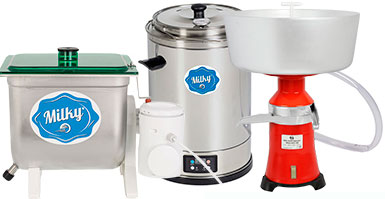While some individuals cannot detect the difference between skim and whole milk, others swear by one or the other. Therefore, there has been a growing debate around which is better. Milk straight from the cow has approximately 4% fat. Boutique or organic products usually have 4% fat. However, supermarket full cream has approximately 3.3 percent fat because, despite the label “full cream,” the milk has been skimmed to make cream and butter. Although skim is frequently referred to as “fat free,” it does include fat, but it must be less than 0.15 percent to be labelled as skim.

In the 1980s, as the link between saturated fat and heart disease became more apparent, skim milk became fashionable. Today, as obesity continues to increase in popularity, the concept of “healthy substitutions” remains prevalent. Making the switch to a lower fat diet appears to be a no-brainer. However, whether or not the compromise on taste and judgement is worthwhile relies entirely on the objectives of the consumer.

If you drink milk in your coffee, it’s likely to depend on how strongly the barista feels about the subject and how much coffee you consume. A typical milky coffee contains between 300 and 400 milliliters of milk, thus switching from full cream to skim milk can mean cutting down on approximately 350 calories per cup. If you drink one cup of coffee each day, a simple shift, provided there is no other dietary change, might result in you reducing approximately 3.5 kg of body fat over the course of a year. When you consume larger or numerous coffees, as well as dairy in other foods and beverages, those calories build up quickly and the skinny latte can definitely be more beneficial.
For people watching their saturated fat intake, skim milk may be a better alternative. The number of people watching their weight is increasing and therefore Reports and Data has estimated that the global skimmed milk market size will reach USD 19 billion by the year 2026, registering a steady CAGR of nearly 7.5%.

Skim milk has all of the vitamins and minerals found in whole milk. It contains vitamins A and D, which are put back into skim milk once the milk fat is removed. Additionally, skim milk contains more protein and calcium. Skim milk is an excellent source of calcium, a necessary element for bone and tooth health. It may help prevent diseases such as osteoporosis.
Additionally, skim milk is an excellent source of potassium, which has been shown to help decrease blood pressure. Milk is a good source of protein. One of the advantages of skim milk is that it contains a sufficient amount of protein in a single glass with no additional fat.
Read More About Skimmed Milk @ https://www.reportsanddata.com/report-detail/skimmed-milk-market

The Downside of Skimmed Milk
You must assess your milk consumption in relation to the rest of your diet. If you use the skim milk substitution as an excuse to make additional bad nutritional choices such as a cake with your coffee, you are unlikely to notice any improvements.
Additionally, skim drinkers may face ridicule. Certain baristas dislike skim, and some cafes will not serve it. Those baristas are not being stingy but refusing to take the skim milk route as without fat, milk loses its texture and has a less pleasant mouthfeel.
Recent study indicates that the full fat option is actually the healthier choice. The study’s authors, David Ludwig of Boston’s Children Hospital and Dr Walter Willett of Harvard School of Public Health, feel that low-calorie beverages do not always equate to low-calorie consumption. The original theory was that children who drank high-fat milk, either whole or 2%, would gain weight as a result of the increased saturated fat calories. However, the data from the study revealed that, across all ethnic groups and socioeconomic sectors, children who drank skim and 1% milk were actually heavier than those who drank 2% and whole milk.

This could be because fat contributes to the activation of “satiety signals,” the messages sent to the brain when you are full. As a result, those who consume full-fat milk may actually consume less energy overall.
Additionally, several vitamins, such as vitamin D, require some dietary fat for absorption. Depending on the rest of your diet, less fat may result in decreased vitamin absorption. Additionally, even full-fat milk has just about three to four percent fat. Additionally, companies attempting to promote reduced-fat milk products may boost the sugar content to improve the taste.

Conclusion
Milk, regardless of its fat content, is an excellent source of high-quality proteins and minerals. Finally, no single item defines the nutritional quality of a diet. There are healthy individuals on both sides of the milk issue, which means you can continue to enjoy your chosen beverage.
If you’re used to the richer flavor of 2 percent milk, making the adjustment to skim may take some time. Making low-fat smoothies by blending skim milk with fresh fruit and adding ground flax seeds or nonfat Greek yoghurt can help the transition. Simple recipe modifications might help incorporate skim milk into any cuisine. Rather than using cream in creamy pureed soups, skim milk and pureed potato can be used as substitute to achieve the creaminess without the fat. To add the creaminess of cream in coffee, consider steaming skim milk; the thickened foamy milk has a deeper flavor than plain skim milk from the refrigerator.
Research Author: Paroma Bhattacharya
Paroma Bhattacharya has dabbled in the realm of content production for over half a decade and possesses extensive experience in penning down pieces related to healthcare, technology, banking, and a wide range of other industry verticals. Her articles focus primarily on balancing relevant data while never neglecting to make the material engaging. She believes in providing objective facts to help people make important business decisions.


